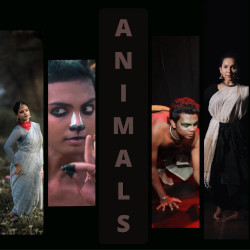
LYLE MICHAEL
| Erasing Borders Through Dance: A Review Erasing Borders Dance Festival Nothing beats a live performance where you feel every move of the performer in your seat. Yet, the online show of “Erasing Borders Dance Festival” organized by the Indo American Arts Council is a concerted effort to capture the essence of the compositions and performances by artists from the US, Canada, and India on screen. Held virtually on Aug 8, the show is ongoing through Aug 22, available to stream on IAAC’s Facebook and YouTube channels. The annual event of music and dance by the IAAC was taken up a notch this year to commemorate the 75th year of India’s independence. India@75 brought forth a plethora of cultural activity, of which the online version of Erasing Borders Dance Festival is for the taking. What’s most significant is the message that the five performances convey in 1.30 minutes: the urgent need to protect and sustain the environment, its flora and fauna, all through the power of music and dance. It is worth a watch.
Not conforming to a chronological norm, the last of the sequences is the most riveting. “Animals” is a compilation of four dance acts, conceptualized by Deepali Salil and delivered by trained Bharatnatyam dancers, as part of a film titled ‘Looking Within Looking Around’. It attempts to reveal what animals mean to us and how we should not harm them but protect, love, care and fight for them. The orca played by Shubhamani Chandrashekar is the one that calls for rapt attention, powerfully depicted to convey a mother’s rage when her child is taken from her. Hell hath no fury than a mother scorned, you can be rest assured. There is a lot of expression in an Indian dance form that is particularly conveyed through the eyes and the hands which Chandrashekar has on point. The gazelle (Nilava Sen), the hyena (Athul Balu) and the Sarus Crane (Deepali Salil) are both graceful and meticulous in their depictions of animals in danger, hunting prey for their little ones and in a mating ritual respectively. The Sarus crane, draped in sky blue, against a backdrop of green flora has all eyes on her, as she portrays the bond she shares with her lifelong mate and the beautiful dance that is their mating. With India’s former Prime Minister, Dr Manmohan Singh’s poem, ‘To a Pair of Sarus Cranes’ as the contextual background, you understand that love is such an intense emotion that when the male crane is killed by humans, the female’s grief knows no bounds. She eventually joins him in his final departure in a flurry of lissome movements.
Another poem that is used as a circumstantial framework in “Erasing Borders” is “The Bird of Time” by Dr Sarojini Naidu, India’s Nightingale. Through the art form of Mohiniyattam – from the Southern state of Kerala – the exemplary dancer, Dr Mythili Maratt Anoop holds together the longest of all the performances in this show, beautifully so. It appears as though she plays a peacock that goes through the seasons of life, from anguish to flourish and irrevocably, silence. Spring bursts forth eternally in unabandoned joy while night brings with it despair until the end nears with the line, “And the mystic silence that men call death.” The commanding sound of a string instrument like the violin can be heard accompanying the dancer’s movements as she speaks them word for word through her mudras – hand movements to depict the musical narrative. Of the other three dance acts – “Bindu”: The Originary Dot, “Leher”: a Kathak performance from Toronto and “Terra”: a collaboration between India and Singapore – the adage ‘all the world’s a stage’ comes to mind. The dancers have worked hard to portray the artist’s vision on a global platform that can reach millions through an online medium as such. That said, we go back to the fact that the live performances which were held at Ailey Theater were probably more impactful. On screen, it’s a bit slow and leaves one expecting more.
“Terra” does capture your mind’s eye, though, in its crescendo coupled with a firm contemporary choreography by Liz Lea and performances by Subastian Tan and Shahrin Johry. “Leher” (wave) choreographed and performed by Tanveer Alam is carried out with flair but leaves you wanting more from this ‘river of life’. The movement film “Bindu” is based on painter, S.H. Raza’s “Prakriti” (nature) and proffers a trance-like experience. It begins with the tranquil sounds of the tanpura and is set amidst nature. The dancer’s hands do most of the talking, though the scenes are a bit unfinished in their transitions. As India celebrates its 75th year of independence, ‘Erasing Borders’ is perfectly timed to remind us that culture breaks barriers like no other and dance is a highly communicative art form to further that. The sheer talent and ideation of the artists goes without saying. Watch and see for yourself. [LM] Lyle Andrew Michael is a Features Editor, a Project Editor and an Arts & Culture Journalist, with a penchant for music, food, wine, pets and travel. You can catch his work at www.thepenchants.com |
| museums | NYTW mail | recordings | coupons | publications | classified |


